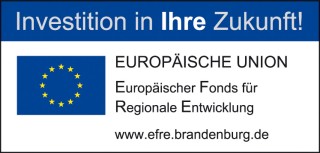In the development of bacterial detection systems, Fraunhofer IZI-BB focuses on the speed of analysis combined with the simplest possible application. In general, a method is considered simple and fast if it is possible to distinguish between gram-positive and/or gram-negative bacteria within a few minutes using established techniques and without the usual equipment setup.
This has long been desired by the users (veterinarians, producers of animal food, food processing companies) on site and contributes to a differentiated application of antibiotics.
Our rapid test is based on different refractive indices of different densities as produced by different matrices in a refractometer. The principle is comparable to the analysis of the sugar content as performed by the winemaker with a hand refractometer during the determination of oechsle.
Another method describes a specific, simple and fast detection for bacterial contamination of liquids. Using a new method of antigen production from bacterial mRNA established at Fraunhofer IZI-BB, monoclonal antibodies are produced, which are reduced to Fab fragments and equipped with an optically detectable electron transfer resonance element. A special measurement architecture based on nano-beads enables a visible colour signal to be generated in the presence of the corresponding bacterial germs, which specifically indicates the germs.
 Fraunhofer Institute for Cell Therapy and Immunology, Branch Bioanalytics and Bioprocesses IZI-BB
Fraunhofer Institute for Cell Therapy and Immunology, Branch Bioanalytics and Bioprocesses IZI-BB